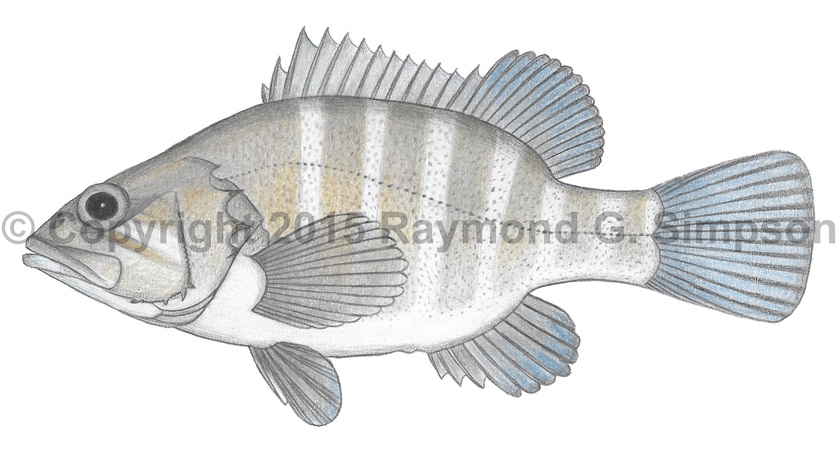
Common Name
Brazilian Seabass
Year Described
Cuvier, 1828
Identification
Dorsal Fin: XIII, 15
Anal Fin: III, 8
Pectoral Fin: 15-16
Lateral Line: 56-61 pored
Three large spines on the inferior margin of the preopercle, the anterior two pointing anteriorly. Caudal fin truncated or slightly rounded. Pectoral fin rounded and at least 35% longer than pelvic fins.
Color
Body light or dark brown; 5 silvery-grey to dark brown vertical bars on sides and caudal peduncle (at all sizes). No spots, blotches, or vermiculations. Belly pale whitish to yellow. Fins with similar body color. pattern.
Size
Maximum size to 40cm SL.
Habitat
Found on rocky reefs and hard bottoms from 15-60m. Quite rare in it's small range.
Range
Southeastern Brazil: Bahia to São Paulo. Also found off Uruguay. Not yet reported off Argentina.
References
Irigoyen, A. J., L. C. Gerhardinger, & A. Carvalho Filho. 2008. On the status of the species of Acanthistius (Gill, 1862) (Percoidei) in the South-West Atlantic Ocean. Zootaxa No. 1813: 51-59.
Irigoyen, A. J., Marin, Y., & A. Carvalho Filho. 2010. Occurrence of Acanthistius brasilianus (Cuvier, 1828) in Uruguayan waters (35 45′ S): when poor taxonomy means poor ecological knowledge. J. Appl. Ichthyol. 26 (2010), 600–601.
Other Notes
This species and Acanthistius patachonicus are frequently confused. That species is found south of São Paulo, Brazil to Argentina with only a small area of overlap in SE. Brazil. The two species differ in several characters, with the most useful being color pattern, pectoral fin length, scales on lateral line, and the extent of spination and squamation on the opercle/preopercle (Irigoyen et al., 2008).